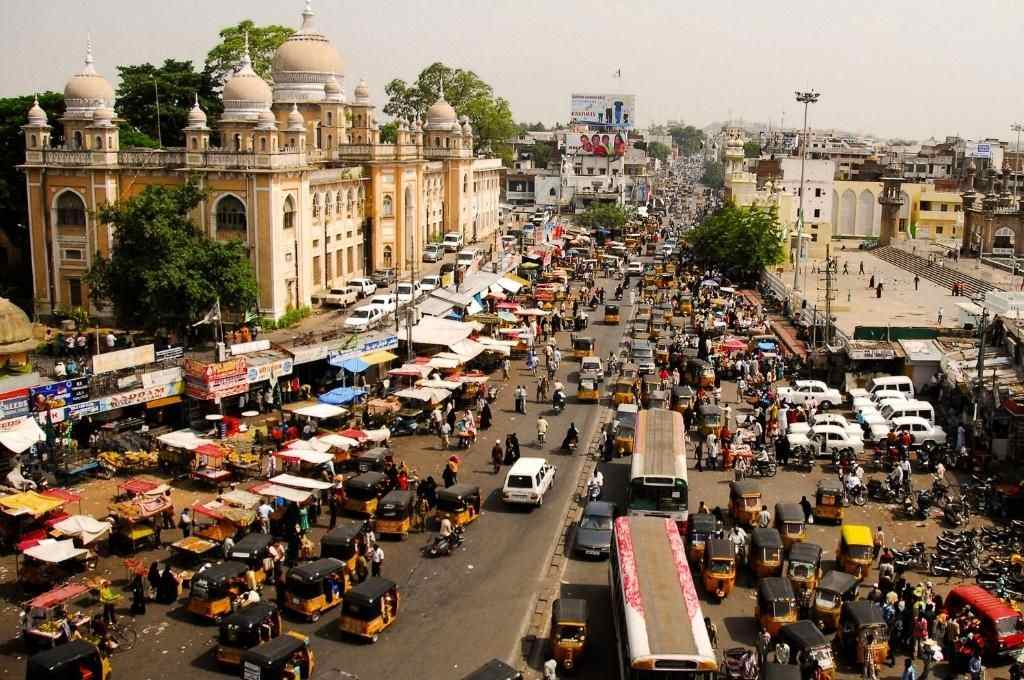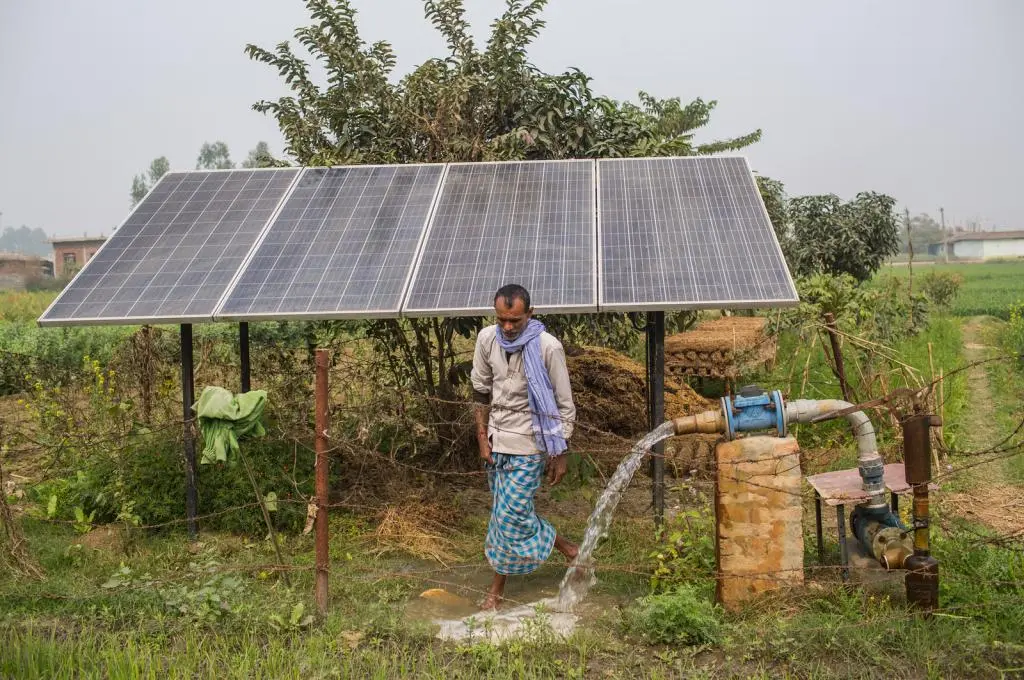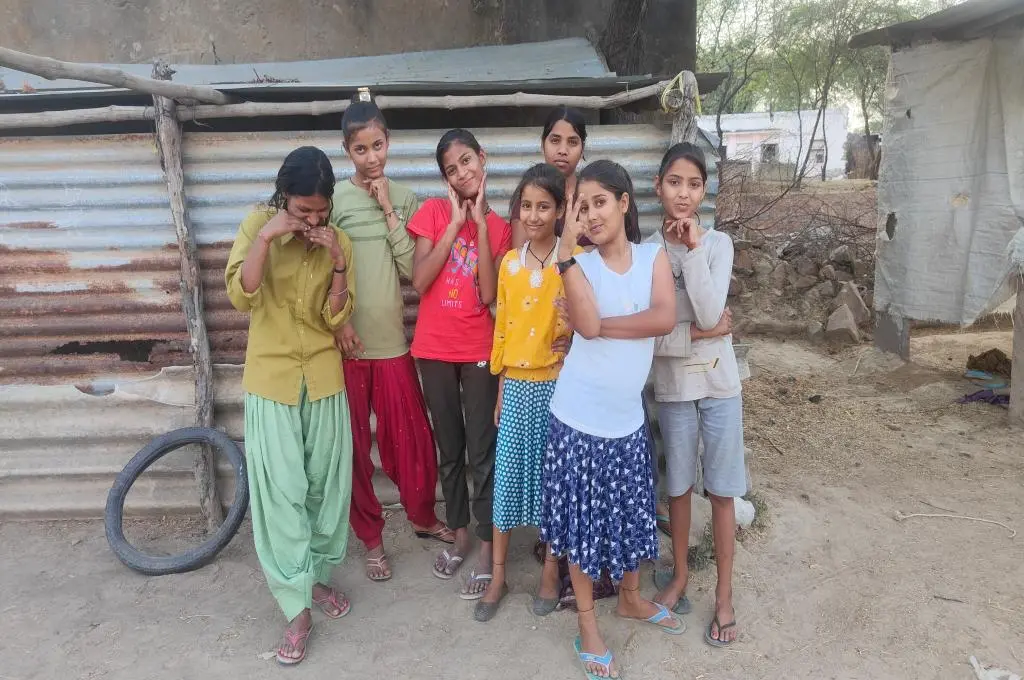India’s commitment to achieve net-zero emissions by 2070 at the Conference of Parties (COP) in 2021 depends heavily on the ability of its cities to transition to low-carbon systems. Given that half of India’s population will live in cities by 2050, the design, construction, and governance of urban areas will determine future emissions.
Beyond the contribution to sustainability goals and targets, low-carbon urbanisation can also provide economic and social co-benefits for Indian cities. Studies have shown that the adoption of carbon-neutral strategies can spur job creation in local government and the private sector in the Indian context. Furthermore, reimagining urban public spaces provides an opportunity to make cities more inclusive and resilient. For instance, the city of Melbourne is strategically investing in planting thousands of diverse species of trees and plants in parking lots, along boulevards, and even on rooftops. This investment is not only creating urban green spaces for sequestration, facilitating water resource management, and reducing urban heat, but is also creating common community spaces and aiding with improving people’s long-term health.
The challenge for Indian cities
While cities across the world are pledging carbon neutrality and adopting strategies to mitigate emissions, there are multiple challenges for Indian cities to commit to low-carbon transitions.
1. Rapid urbanisation
India’s tremendous urban transition demands a radical transformation of the built environment, transportation, and energy sectors in cities. According to the 2011 census, India’s urban population has grown by almost 32 percent in the past decade. Projections further indicate that between 2014 and 2050, 400 million people will move to cities. To ensure that cities are not locked in to unsustainable trajectories, they must decarbonise their systems. However, the capacity of cities to implement these changes is bound by current planning processes, which are in turn limited in vision and scope.
Cities are currently governed by statutory master plans, city development plans, service-level improvement plans, and city sanitation plans, which rarely include visions for low-carbon futures and are made without adequate public participation. As a result, urban climate action has often piggy-backed on local development priorities through unique projects and not through integrated planning. For example, a study of 59 city plans in India found that only 10 percent have incorporated climate strategies. In fact, poorly planned urbanisation is resulting in emissions growing faster in India than in other countries. Research shows that a 1 percent increase in urbanisation translated into a 0.24 percent increase in emissions in India but led to only a 0.12 percent increase in emissions in China.
2. Limited capacities
Cities are not equipped to drive climate action independently. There is no formal mandate for cities to produce or finance climate action plans, even though local actions are most effective at fighting climate change and building resilience. Limited devolution of urban governance means that central and state priorities influence how cities implement climate efforts, as local bodies are dependent on them for policy directions and funding. There is also limited capacity within local governments to imagine low-carbon transitions as city managers of line departments and town planners often lack technical knowledge about climate change.
In recent years, capacity gaps have been filled by non-state actors, often through collaborations with consultants, researchers, and global donors. Yet, this has resulted in local climate action being driven by private rather than local needs and a relatively experimental approach to addressing climate impacts through projects without addressing governance and long-term planning. For example, business communities in Surat were able to lobby and direct adaptation efforts to an industrial area that was at risk to flooding and sea-level rise. However, these processes were informal and highly exclusionary as regular citizens and the urban poor were rarely informed or included in decision-making processes around climate adaptation.

3. Lack of climate-friendly urban policies
While existing initiatives such as the government’s Climate Smart Cities Assessment Framework benchmark cities on the basis of their climate actions, most urban schemes still do not adequately mainstream climate action or decarbonisation strategies. For example, the Smart City Mission and the Atal Mission for Rejuvenation and Transformation (AMRUT) encourage cities to invest in non-motorised transport infrastructure, waste management, green and energy-efficient buildings, and solar energy. However, they are only advisories and cannot be enforced.
In order to transition to low-carbon urban growth trajectories, planners require information about population, economy, urban growth, and associated emissions.
Moreover, these schemes are neither accompanied by financial incentives nor are they tailored to accommodate capacity building for city-level officers. As a result, several of our large urban policies are not actually climate friendly. And even though they provide the much-needed infrastructure, they have negative externalities. For example, Bhopal’s Smart City project to redevelop T T Nagar involved the cutting and planned translocation of a large number of trees, activities which are likely to exacerbate future urban heat island effects and air pollution.
4. Insufficient data and evidence
In order to transition to low-carbon urban growth trajectories, planners require information about population, economy, urban growth, and associated emissions. Unfortunately, data collection, especially about industry and sector-specific greenhouse gas emissions, is at a nascent stage. This is due to limited capacity in government bodies to generate timely and spatial data. Siloed governance also plays a role as it doesn’t create channels for data sharing and coordination between departments.
What needs to change?
With much of India’s urban infrastructure yet to be built, there is an opportunity for Indian cities to address challenges in governance, coordination, data systems, and capacity to make a low-carbon trajectory both possible and achievable. Here are six important aspects that cities must focus on to plan for low-carbon transitions.
1. Adopting a systems approach
Emissions in cities are driven by systems that transcend local boundaries and jurisdictions such as energy, economies, infrastructure, and transport. A systems approach therefore becomes crucial to adequately address regional emissions. It takes into consideration the interdependent nature of urban structures such as infrastructure, land use, local economies, and environmental systems, and how people interact with them. By adopting a systems approach and working across governance scales—cities, districts, and states—mitigation strategies can have a greater impact.
2. Strengthening local government capacities
City officials need to be trained on climate-sensitive urban planning so that these principles are reflected in the projects they commission and implement. They must also have the autonomy and skills to manage future risks, provide basic services, and plan sustainable infrastructure and green jobs locally. While several capacity-building projects such as those under AMRUT already exist, they need to be tailored to cater to local government needs. In India, officials in Tiruchirappalli, Udaipur, and Vadodara are being trained on climate-resilient planning and infrastructure, but these efforts too need to be scaled.
3. Prioritising integrated planning
Spatial planning plays an essential role in influencing the way cities are built, and therefore is a key factor to consider when talking about urban emissions. Sprawling cities with separated land uses encourage private vehicles and aren’t sustainable. Compact and mixed use development, on the other hand, can help reduce emissions. Cities where residential and commercial services co-exist can cut down travel time and minimise energy and land consumption.
Visions for low-carbon futures need to be local and participatory.
Furthermore, planning that incorporates nature-based solutions and blue-green infrastructure can help reduce pollution and mitigate emissions through sequestration while improving community access to public spaces. For example, the city of Buenos Aires has transformed an urban landfill into a nature reserve by restoring a local wetland and greening the dumping site. This reserve is now not only a public space for residents but also an investment towards climate resilience, as the reservoir helps mitigate flooding in the area. Additionally, the restored wetland has great potential to store carbon.
4. Tailoring plans to address local environmental contexts
Visions for low-carbon futures need to be local and participatory. While planning, this also means taking into account the implications of low-carbon transitions on livelihoods, local economies, and more.
5. Institutionalising frameworks for data collection and sharing
Data from various agencies, including central and state agencies such as the Indian Meteorological Department, electricity departments, and other parastatals, must be shared with planners and urban decision makers in a timely manner. This will enable cities to take decisions that are informed by reliable local data instead of planning in response to central diktat.
6. Creating space for coordinated government action
Innovative governance approaches need to be put in place so that the various city-level agencies can coordinate their approaches. Urban living labs, or spaces that bring together government, policymakers, and residents on key thematic issues to facilitate discussion through workshops, can help in addressing institutional silos. Globally, these urban living labs take varied institutional forms and are initiated by governments, universities, and civil societies. In India, they have the potential to address several challenges by localising solutions, working with multiple stakeholders, and addressing siloed governance.
—
Know more
- Learn more about what low-carbon development of cities looks like.
- Learn more about the importance of applying a climate lens to urban planning.
- Read this article to understand what India needs to achieve net-zero status by 2070.
Do more
- Explore what your city is currently doing to reduce emissions and build resilience to climate risks on the National Institute of Urban Affair’s Climate Data Observatory.
- Contact your city mayor to understand what city projects are in the pipeline and discuss how they can be more climate-sensitive.






